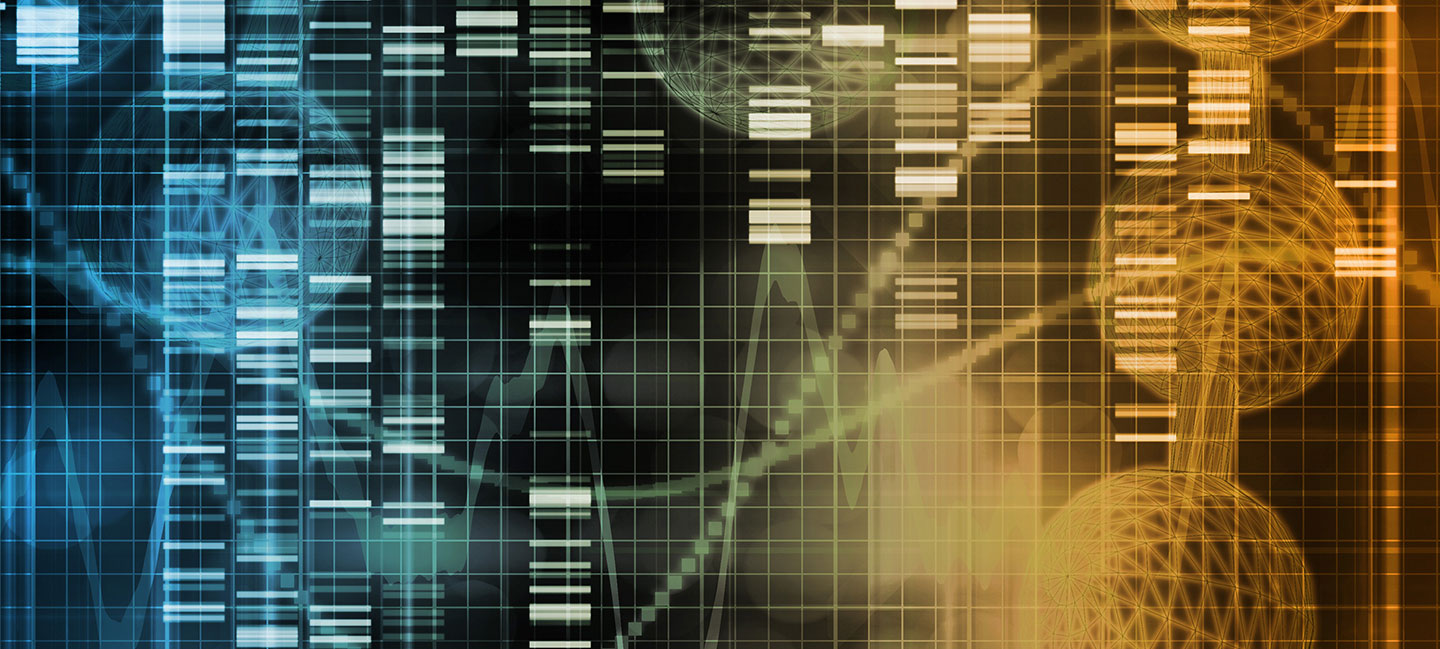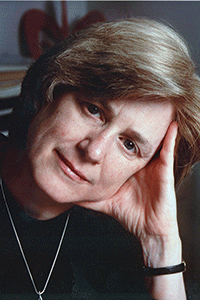Mary-Claire King and Judith Rapoport: New Hope From Discovery of Rare Genetic Mutations in Schizophrenia
Mary-Claire King and Judith Rapoport: New Hope From Discovery of Rare Genetic Mutations in Schizophrenia

From Breakthroughs, 2010
The field of schizophrenia genetics is booming. Roughly every other day, a scientific paper is published linking genetic mutations with the disease. A 2008 study funded partly by the Brain & Behavior Research Foundation (formerly NARSAD) examined 1,179 research papers appearing on the subject through 2007. These papers cumulatively reported 3,608 different gene variations with possible associations to schizophrenia. The variations involved 516 different genes.
What does this mean? What are nonscientists — especially those who love and care for people with schizophrenia — to make of the steady flow of news about the genetics of the illness? Is the ferment in the field to be understood as a sign of progress?
"The arc of science is long,” reflects Foundation Distinguished Investigator Mary-Claire King, Ph.D., a geneticist who should know. “It can take decades from the time of a discovery until the time when it proves useful for a patient. But the process, I assure you, is robust. Our experiences as scientists gives us confidence that the process works.”
Millions of nonscientists know about Dr. King’s discovery of a mutation in a gene she named BRCA1 that led to powerful breast cancer diagnostics. Commercial tests for the mutant version of the gene — the first inherited gene for breast cancer to be discovered, and closely related to another, BRCA2, identified later — have alerted a subset of women to their unusual susceptibility, and to elevated risk of suffering relapse after treatment, while sparing many thousands who lack the mutation unnecessary treatment.
In the case of King’s breast cancer genes, the “arc” connecting basic research discovery with clinical tools was short, roughly a decade. While immense progress is being made in understanding the genetics of schizophrenia, and of a host of other major mental illnesses, we still lack molecular diagnostics. But the search is on for these and much more, and BBRF is doing its part to fund the best and most innovative scientists involved in the search.
It is surely good news that Mary Claire-King has in recent years turned her attention to the genetics of mental illness. She has benefited from a NARSAD grant that has enabled her and world-class collaborators, including Judith L. Rapoport, M.D., also Scientific Council member and Foundation Distinguished Investigator, to advance our knowledge of schizophrenia genetics. Along with Jonathan Sebat, Ph.D., of New York’s Cold Spring Harbor Laboratory and UCSD, King and Rapoport recently have published two papers telling the world something important that it did not previously know about the genetics of schizophrenia — and, at the same time, autism, too.
Discovery of mutations shows extra or missing genes
In 2008, King, Rapoport and Sebat discovered the previously unappreciated role of rare genetic mutations in schizophrenia. The mutations in question were not “point mutations,” single- “letter” changes in the DNA code that potentially can change a gene’s ability to encode proteins. Rather, they were “structural mutations,” stretches of the genome where genes were either missing altogether — deleted — or appeared in multiple copies.
Such mutations are called copy number variations (CNVs). We’re all supposed to have in our cells two copies of each of the approximately 22,000 human genes — one copy from each of our parents. In 2003, researchers were surprised to discover that most of us have about 100 duplicate and/or missing genome segments. Usually they’re harmless. Since only 1 to 2 percent of the genome consists of genes (much of the rest, once thought “junk,” helps to regulate genes), many missing genome segments don’t “hit” areas occupied by genes. But sometimes they do, adding or chopping out large areas containing one or more important genes. Recent research suggests that there are specific regions over the 23 human chromosomes where this has a tendency to occur, and where it affects genes associated with disease; these are called “hot spots.”
In rare cases the deletion of a single gene or the presence of one or more extra copies can wreak havoc — turn a life upside down — especially during the period very early in life when our systems are still developing. The King-Rapoport-Sebat study suggested this might be true in a number of genes known to be involved in the early development of our brains.
The team counted the copy number of genes in samples drawn from three groups: a group with childhood-onset schizophrenia that Rapoport, with a NARSAD grant, was able to screen for rare copy number variants; people with adult-onset schizophrenia (age 19 or later); and healthy controls. The results were stark: rare CNVs showed up in people with schizophrenia three times more often than they did in healthy people. They were almost 10 times more likely to be present in people with childhood-onset schizophrenia. And of 24 different rare mutations seen in the schizophrenia patients, nearly half are known to affect cellular signaling pathways critical to the growth and development of nerve cells and to the formation of synapses, the gaps across which nerve impulses are transmitted.
In a second study, published in 2009, the same team, joined by BBRF 2007 Independent Investigator Deborah L. Levy, Ph.D., of MacLean Hospital and Harvard University, focused on rare gene copy-number variations in a region of chromosome 16, occurring in 1 in 5,000 people, that strongly dispose to schizophrenia in those unlucky to have them. This finding was based on looking at the genomes of 4,551 patients and 6,391 healthy people. One extra copy of the region, called 16p11.2, is associated with at least an eightfold increase in schizophrenia risk. Intriguingly, deletion of this same region has been shown by other teams to confer high risk of autism and other developmental disorders in children.
Shared genes in schizophrenia and autism
Taken together, these results suggest some genes are shared between schizophrenia and autism — that they are involved in some of the same or related neurobiological processes. Rapoport stresses that this is the very beginning of a line of research that should help us understand the underlying biology. A hot spot like 16p11.2 seems to connect via deletion with one major mental illness and via duplication to another mental illness. This places in high relief the question of shared genes and related biology in multiple illnesses.
While many have suspected that this would be so, it is the gritty details, the mechanisms, the biological process perturbed in one way or another by mutations in the same genes, that sets the research agenda that BBRF is helping to fund. How do deleted or extra copies of genes perturb normal biology, particularly in early development of the brain and nervous system? How do we explain that virtually all of the rare CNVs found in children with childhood-onset schizophrenia are inherited from a healthy parent?
For now, however, even preliminary results suggest to both Rapoport and King a clue to a major mystery about mental illness in general and schizophrenia in particular.
If people with schizophrenia have fewer children than healthy people — and many studies have confirmed this — how can we understand what Rapoport calls “this human paradox”: on the one hand, that we consistently find 1 percent of the population, in every part of the world, develops schizophrenia; on the other hand, that these same people often don’t pass on their genes. Why, in other words, does schizophrenia persist?
The discovery of the importance of rare mutations in schizophrenia provides a clue. Each CNV may be, in itself, very rare. But in aggregate, they are numerous, and in many cases, seem by themselves (perhaps in concert with environmental or other factors) capable of causing the illness. Add to this the fact, also recently discovered, that a significant number of rare mutations in adult onset cases are not inherited — they occur spontaneously, due to routine copying errors in cells.
A hypothesis linking these two observations might go like this: a significant portion of a causally complex mental illness like schizophrenia arises anew with each new generation. Spontaneous genetic errors leading to CNVs are rare, but they are often potent. When they do occur they can be causative. This is one possibility that the ferment in schizophrenia genetics has brought to the attention of researchers funded by BBRF and others, as the work pushes steadily along King’s “long arc” toward fuller understanding.



